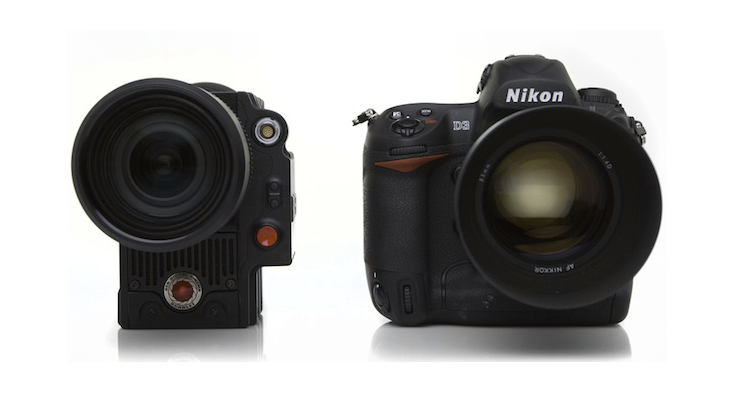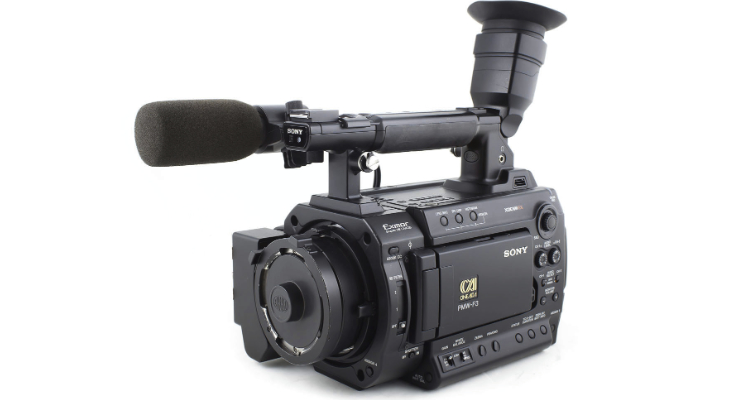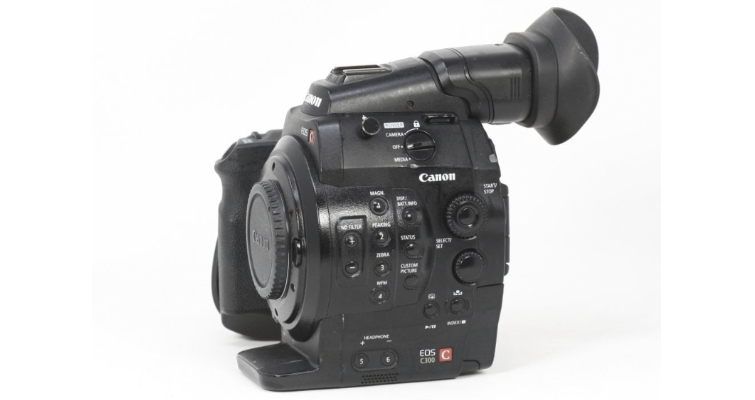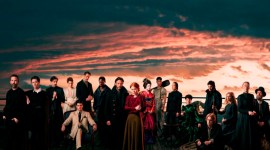
Classic Cinema Cameras at Bargain Basement Prices
These cameras were once cutting edge, but if you bought one now, could you live with their foibles, even at the price of a mid-level DSLR?
Like the classic car market, classic cameras are increasingly popular—tapeless cinema cameras especially so. The promise of a camera that can return a film-like moving image is what we all want, isn’t it? That’s why Canon’s revolutionary 5D Mark II camera is still available on eBay for over $500, twelve years after it was first available. It’s that 35-65mm creamy Canon aesthetic that keeps people coming back for more.
So, we thought we’d have a look at the second-hand cinema camera market to encourage you to see what’s out there. But, buyer beware, here are some caveats.
- Always check that the camera you’re interested in has a format you can use or at least transcode from.
- Check the reliability of the camera in forums (how hot does it or did it run, for instance).
- Check the media that it uses, the I/Os, the availability of batteries, bug reports, storage choices, etc.
You may be looking to buy a classic camera to replace what you have, or you may see it as a project purchase. Whatever you have in mind for it, please do your research carefully.
RED Scarlet 2/3 – Launched 2010

Apart from RED suing LG over the Scarlet name, there was less drama at its 2010 launch than the original RED One product five years earlier. This version of Scarlet was the 2/3in chip and at the time was priced to compete with the full-frame DSLRs from Canon (5D Mk II) and Nikon (D3). It was felt that a non-full-frame camera would avoid the huge depth of field issues that were both a blessing and a curse—you really needed a focus puller to help you get the best results.
The Scarlet 2/3 also let you use Canon and Nikon lenses—you had dual audio inputs with +48V phantom powering. It had proper video outputs for monitoring and Genlock for timecode. Not to mention the electronic viewfinder.
The 2/3 Scarlet could record 3K REDCODE RAW video at 120fps (or 150fps burst mode), and scaled 720p or 1080p recording at 60fps.
At the time, Scarlet 2/3 could be bought either as a full Scarlet 8X fixed package that included the brain, side CF module, REDmote, 2.8″ touchscreen LCD, REDVOLT battery and travel charger for $4,750, or the brain only for $2,750.
Our guess is that you’ll have trouble finding one now. And, if you do, you may find it just too restrictive, especially with that sensor size.
RED Scarlet X – Launched 2011

The launch drama was back when RED decided to bring the Scarlet-X launch forward to spoil Canon’s huge Hollywood unveiling of the original C300 camera. It worked to a degree but still came off as being a bit spiteful. (More on the C300 later in this article.) What did Scarlet-X bring to new cameras at the time?
Well, the rumor was that Scarlet-X was really a RED Epic in sheep’s clothing, as it had de-tuned Epic sensors and processing inside. The spec was (however) impressive. A 14-Megapixel MYSTERIUM-X sensor with a max image area of 5120 (h) x 2700 (v), giving you 13.5+ stops—up to 18 stops with HDRx. HDRx was RED’s 2-channel exposure tool back when HDR had nothing to do with televisions (also, on this model, HDRx was only available in 3K 24p).
This is a really nice 35mm-sized 4K camera. Although it does claim 5K, you’ll only get around 12fps at that size. If you want slow motion or high speed, you’ll get 60fps at 2K (windowed sensor), 48fps at 3K, and 30fps at 4K.
There’s full recode implementation with compression down to 3:1 from 18:1. Audio is two-channel, uncompressed, 24-bit 48 kHz, with 4-channel an option. Also, full delivery options including DPX, TIFF, OpenEXR—all built with aluminum alloy.
As for red flags (excuse the pun), this is a DMSC1 Brain, and they did have reliability problems with questionable battery life. You also have to deal with the REDMAG 1.8″, RED MINI-MAG storage.
There are packages for sale on eBay—we found a comprehensive one with an EF lens mount for around $8,000 with lens.
RED Scarlet W – Launched 2015

It’s a bit early to call the DMSC2 Scarlet-W a classic cinema camera, yet it’s no less impressive. It features the DRAGON 5K Super 35 CMOS sensor and REDCODE RAW. Working from the ground up, the team at RED developed this sensor with an updated color science, while making additional improvements in dynamic range and sensitivity.
New packages back in 2015 started from around $14,500, with just a DSMC2 Brain coming in at $9,950. Now, on eBay, you’re looking at package prices of around $5,500. It’s always worth looking at packages as RED made most of their money from the accessories. So, the more you get in a package the better.
At the time of its launch, the Scarlet-W was good value, especially with its DMSC2 Brain and Dragon sensor inside. If you can get a comprehensive package at around $5,500, I’d go for it.
Sony PMW-F3 – Launched 2011

There was justifiable excitement at the announcement of the PMW-F3 as it was. Basically, a pro-camcorder but with a cinematography-grade, Super 35mm size sensor. At the front, you had a proprietary lens mount with a supplied PL mount adapter. Electronic contacts on the mount and adapter allowed the camera to read lens data from Cooke and ARRI lenses.
Sony also introduced their own range of PL glass. These were chunky primes (35mm, 50mm, and 85mm, all at T2) and were manual focus and manual iris with proper follow-focus rings. Hopefully any second-hand cameras would have some lenses in a package for sale.
But, here’s the not-so-great news. The camera was only HD as in 1920×1080, but planted on a S35mm sensor so the pixels were huge, which is always a good thing and what made the ARRI ALEXA sensor such a legend.
More not-so-great news is that if you wanted any higher frame rates, you’d have to go down to lower than HD quality to get it—1280×720 for 60fps.
The Sony F3 isn’t a small form factor either, it’s weirdly huge. The body is scattered with a good array of threaded bushes for mounting accessories. Professional I/O include a couple of HD-SDI outputs, standard SDI, composite, Genlock, and timecode in and out, as well as HDMI out, Firewire, and USB.
Stereo audio input is available on XLRs (with phantom power), and there are a couple of RCA phonos for audio output.
So, here’s the thing about the PMW-F3. It has a nice Bayer processed sensor and produces amazing images, although only at HD. It has a bulletproof CODEC in the XDCAM EX. It’s a proper video camera with all the bells and whistles, and it has a PL mount. You could imagine buying the camera for around $2,000, then just renting a Cooke or ARRI film lens for your project. For a web film, that might look amazing!
This could be your genuine classic cinema camera! Just don’t think you can fit it in a small kit bag.
Canon C300 Mk1 – Launched 2011

As mentioned already in this article, the launch of the original Canon C300 was a big deal. The video success of their 5D Mk II had given the powers that be in Japan cause to think that video could be a bigger part of their future. The new C300 was the culmination of furious research and R&D in the two years leading up to the launch—the rest is history.
But, how good was the C300? To a certain extent, the camera was a box-ticking exercise for Canon. They wanted a camera that would be bought in multiples by broadcasters, so they installed a broadcast CODEC with a broadcast data rate. The 24.6mm x 13.8mm sensor was also Super 35mm to give you that cinematic look. But, they didn’t want to deliver the market another DSLR to deal with, this had to be a proper video device.
Canon added their log shooting features and a claimed 12-stops of a dynamic range, ending up with an out-of-the-box ASA of 850—good for low-light shooting. This was all in 8-bit, but we’re talking ten years ago.
Other boxes ticked were EF mount and a lack of the moiré and aliasing that dogged the full-framed DSLRs that were so popular. The small form factor was also a hit with shooters that liked to accessorize.
The camera sold in its thousands and can now be rightly called a classic. Seek one out as soon as possible, but get a warranty if you can—eBay is full of them.
For more gear updates, tips, and advice for you:
- Beware of the Shake: How Excessive Handheld Can Ruin a Shot
- Easy Audio: The New Deity Pocket Wireless Microphone
- LUMIX BS1H: Panasonic’s New 6K Live/Cinema Camera
- The Gigabyte Aero 15 4K AMOLED: A Portable Editing Beast
- 3 Ways Filmmakers Might Actually Use the iPhone 13
Cover image via YAKOBCHUK VIACHESLAV.





